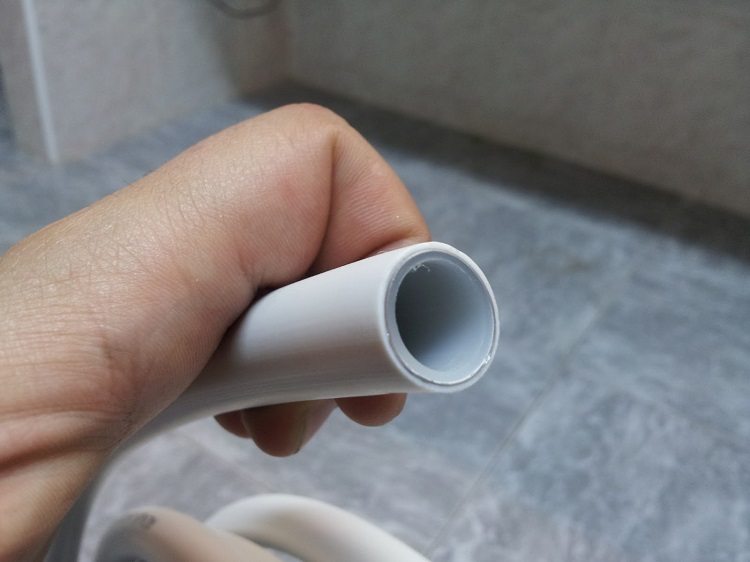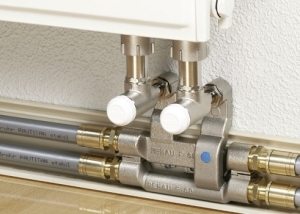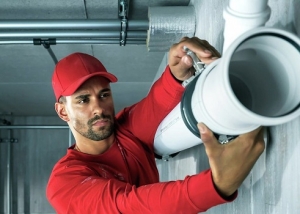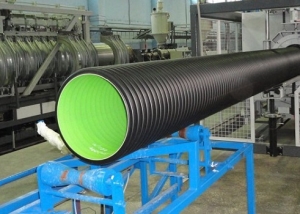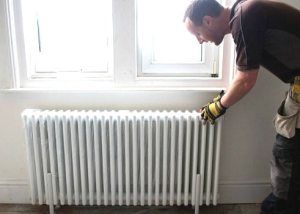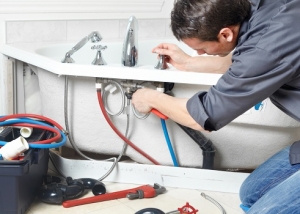Heating systems for apartments and private houses are constantly being improved, becoming more convenient and economical. Making the room much more comfortable allows the creation of a warm floor. The heating pipes are laid in the screed, the heating of which occurs as a result of circulation through the hot water pipeline. Heat, rising up, first warms up the flooring and then the entire living space. Such a heating system is the most economical.
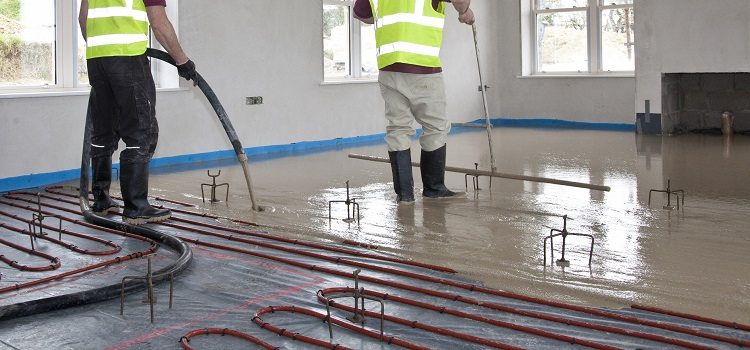
Laying heating pipes in the floor under the screed is a popular type of device for heating home systems
Pipe selection
Water most often acts as a heat carrier, but a solution of ethylene glycol or antifreeze can also be used. The system itself has a number of indisputable advantages, allowing evenly heating the room with minimal energy consumption. The key to achieving optimal heating results is the correct choice of pipes and their laying patterns.
These elements must be selected taking into account the following requirements:
- durability. Since heating pipes are laid in the floor, their replacement or repair is not cheap;
- strength. This characteristic determines the level of operating indicators of pressure and temperature of the system;
- excellent heat dissipation. Perhaps this is the most important requirement. The volume of heat entering the room depends on this property.
- minimum bending radius. This parameter imposes restrictions on the configuration of the underfloor heating system.
- low coefficient of expansion. Under the influence of pressure and high temperature, the diameter of the pipes increases slightly. For open highways this is not critical. However, if heating pipes were laid in the floor under the screed, an increase in their size may violate the integrity of the floor covering;
- environmental friendliness. Everything is clear here: in the event of an accident, the pipeline should not harm the health of residents of the housing and the environment.
Types of heating pipes for screed
All of these requirements are met by polypropylene, polyethylene and metal-plastic products. All of them have their advantages and disadvantages. Therefore, it will be useful to consider the pros and cons of the heating pipe in the floor of each type in a little more detail.
Polypropylene pipes. Despite a significant plus - low cost - they did not find wide distribution for the creation of warm floors. The reason lies in the presence of a number of significant drawbacks.
So, a polypropylene pipe has a considerable bending radius (8 diameters). This factor affects the distance between adjacent branches of the warm floor pipeline. With a diameter of 15 mm, those will be 1.2 meters apart, which will negatively affect the level of heating of the room.
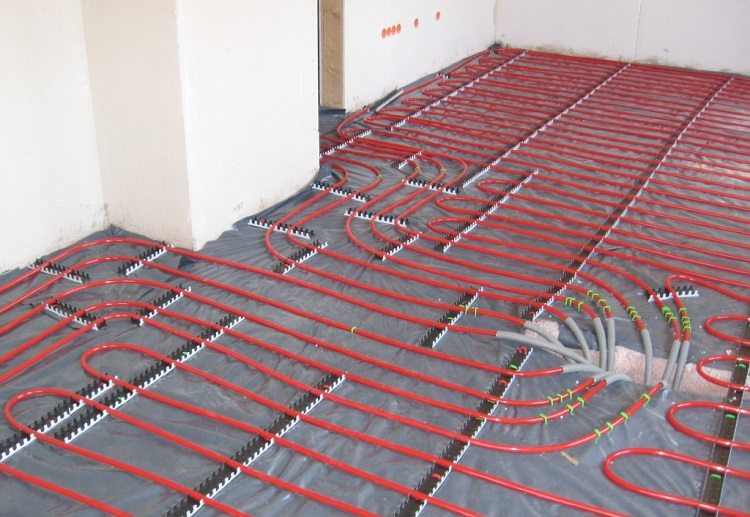
XLPE pipes are one of the best options for floor heating, as they are durable, flexible and do not expand when heated.
Important! Critical is also the temperature at which the polypropylene floor heating is installed. It should be no lower than +15 degrees.
Polyethylene pipes. There is one caveat. It consists in the fact that the material of their manufacture is not ordinary, but cross-linked polyethylene.Of the advantages of heating pipes for this type of screed, strength, reliability and resistance to high temperatures should be highlighted. Existing technologies make it possible to obtain cross-linked polyethylene of various densities. So, on the market there are pipes marked:
- LDPE (Light Density - Low Density Polyethylene);
- MDPE (Middle Density - medium density);
- HDPE (High Density).
The advantage of products of this type is a smaller bending radius (5 diameters). In addition, they withstand temperatures of + 120˚С. But there were some minuses here. Cross-linked polyethylene pipes do not hold well. In view of this, their reliable fixation involves the use of a large number of fasteners. And the above characteristics, strength and reliability relate only to the transportation of the coolant. During pouring screeds or even when laying polyethylene pipes can be easily damaged.
Plastic pipes. These products appeared on the market quite recently, but have already managed to gain leading positions.
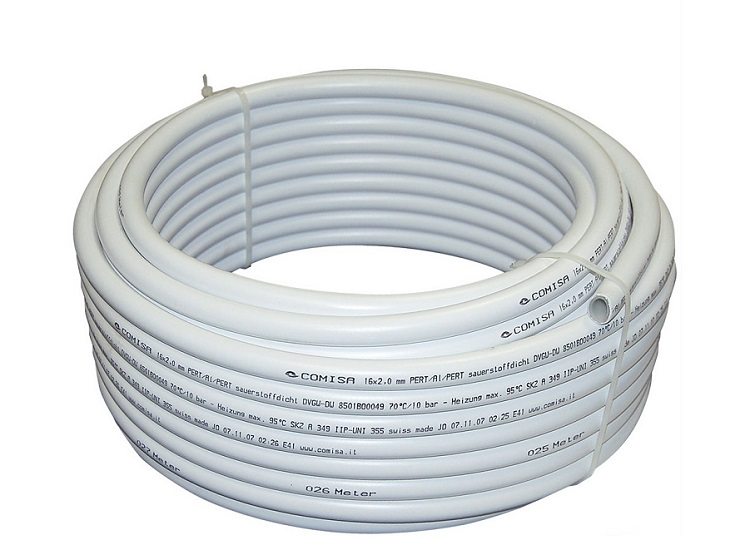
Pipes made of metal-plastic have high strength characteristics, are not susceptible to corrosion, scale is not deposited inside them
The metal-plastic pipe consists of three layers. Internal polymer provides not only flawless transportation of the coolant due to its smooth surface, but also protects the product itself from scale and corrosion. As a result, a long service life. The middle aluminum layer allows you to withstand high temperatures and keep the shape of the pipe. The top layer of polymer protects aluminum from external mechanical influences. All three layers are joined using a special adhesive. Among other things, it is this material that determines the life of the created structure. If the adhesive dries, the pipe simply delaminates and ceases to hold hot water.
Of the minuses, it is necessary to highlight the relative complexity of self-bonding segments of the pipeline (at home, laser or ultrasonic welding, as a rule, is not used). If you squeeze a little, leaks will appear. If on the contrary - “squeeze” - then the deformed part will have to be cut off and a new one applied fitting.
In conclusion, it should be noted that the use of copper pipes is an ideal technical solution for arranging a warm floor. Of their advantages, experts distinguish an impressive margin of safety and the same durability. And the heat transfer and the permissible bending radius of copper pipes elevate them to the rank of absolute leader. However, due to the high cost, not every of our compatriots can afford to install a warm floor on their basis.
